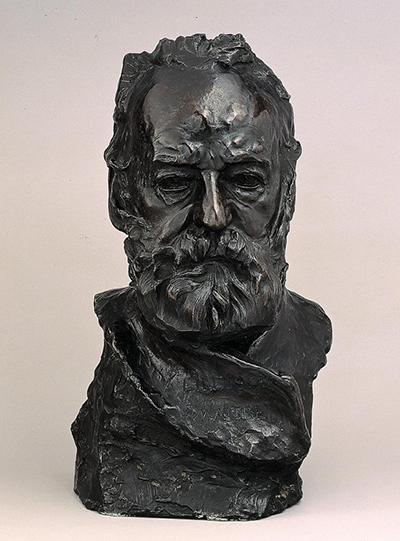Bust of Victor Hugo, created in 1883, is a sculpture by Auguste Rodin of a famous author who had entered the world of politics after spending decades in exile due to his opposition to the government.
The French sculptor, whose previous works included The Age of Bronze and Saint John the Baptist Preaching, was introduced to the romantic writer by a mutual friend and produced a variety of preliminary works that included a clay model and sketches that were made from different angles and heights. A plaster cast, into which molten bronze would be poured, was made of the master model and used to duplicate the clay sculpture in metal form. The patinated bronze bust, measuring 48.5 centimetres by 30.5 centimetres, was donated to the Musée Rodin in Paris in 1928 by the subject's great-granddaughter.
Edmond Bazire, the man who introduced Rodin to Hugo, argued that creating a bust of the celebrated writer would be beneficial to the Parisian sculptor's career. Hugo, author of The Hunchback of Notre-Dame and Les Miserables, had fled France after Napoleon III seized power in 1851 but returned after the Emperor's defeat in the Franco-Prussian War enabled the republican style of government to be restored. The elderly writer, regarded as a national hero after the formation of the Third French Republic, refused to sit for his portrait for more than half-an-hour at a time but allowed Rodin to observe him living his day-to-day life and to draw him while he was sleeping or eating.
The bronze bust, coated in a black patina through which traces of brown metal are visible, depicts Hugo with a pensive expression upon his face. The author, bearded and shrouded in what appears to be a cloak that is fastened at his neck, was eighty-one years old at the time in which this portrait was created and remained in his living-room while the sculptor worked on the clay model on the balcony. Rodin, able to draw or sculpt from memory, would run into his subject's house to observe him and rush back out onto the balcony in order to recreate what he had seen in clay. Hugo, who died two years after the bust's completion, is frowning and the corners of his mouth are turned downwards.




